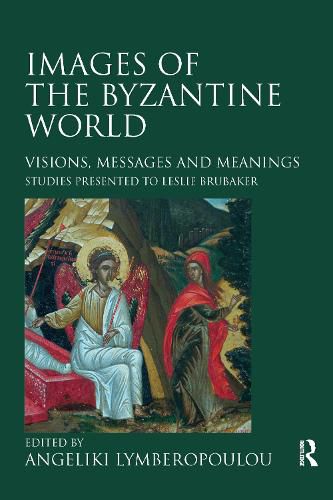Readings Newsletter
Become a Readings Member to make your shopping experience even easier.
Sign in or sign up for free!
You’re not far away from qualifying for FREE standard shipping within Australia
You’ve qualified for FREE standard shipping within Australia
The cart is loading…






The main themes of this volume are the identification of ‘visions’, ‘messages’, and ‘meanings’ in various facets of Byzantine culture and the possible differences in the perception of these visions, messages and meanings as seen by their original audience and by modern scholars. The volume addresses the methodological question of how far interpretations should go - whether there is a tendency to read too much into too little or whether not enough attention is paid to apparent minutiae that may have been important in their historical context. As the essays span a wide chronological era, they also present a means of assessing the relative degrees of continuity and change in Byzantine visions, messages and meanings over time. Thus, as highlighted in the concluding section, the book discusses the validity of existing notions regarding the fluidity of Byzantine culture: when continuity was a matter of a rigid adherence to traditional values and when a manifestation of the ability to adapt old conventions to new circumstances, and it shows that in some respects, Byzantine cultural history may have been less fragmented than is usually assumed. Similarly, by reflecting not just on new interpretations, but also on the process of interpreting itself, the contributors demonstrate how research within Byzantine studies has evolved over the past thirty years from a set of narrowly defined individual disciplines into a broader exploration of interconnected cultural phenomena.
$9.00 standard shipping within Australia
FREE standard shipping within Australia for orders over $100.00
Express & International shipping calculated at checkout
The main themes of this volume are the identification of ‘visions’, ‘messages’, and ‘meanings’ in various facets of Byzantine culture and the possible differences in the perception of these visions, messages and meanings as seen by their original audience and by modern scholars. The volume addresses the methodological question of how far interpretations should go - whether there is a tendency to read too much into too little or whether not enough attention is paid to apparent minutiae that may have been important in their historical context. As the essays span a wide chronological era, they also present a means of assessing the relative degrees of continuity and change in Byzantine visions, messages and meanings over time. Thus, as highlighted in the concluding section, the book discusses the validity of existing notions regarding the fluidity of Byzantine culture: when continuity was a matter of a rigid adherence to traditional values and when a manifestation of the ability to adapt old conventions to new circumstances, and it shows that in some respects, Byzantine cultural history may have been less fragmented than is usually assumed. Similarly, by reflecting not just on new interpretations, but also on the process of interpreting itself, the contributors demonstrate how research within Byzantine studies has evolved over the past thirty years from a set of narrowly defined individual disciplines into a broader exploration of interconnected cultural phenomena.